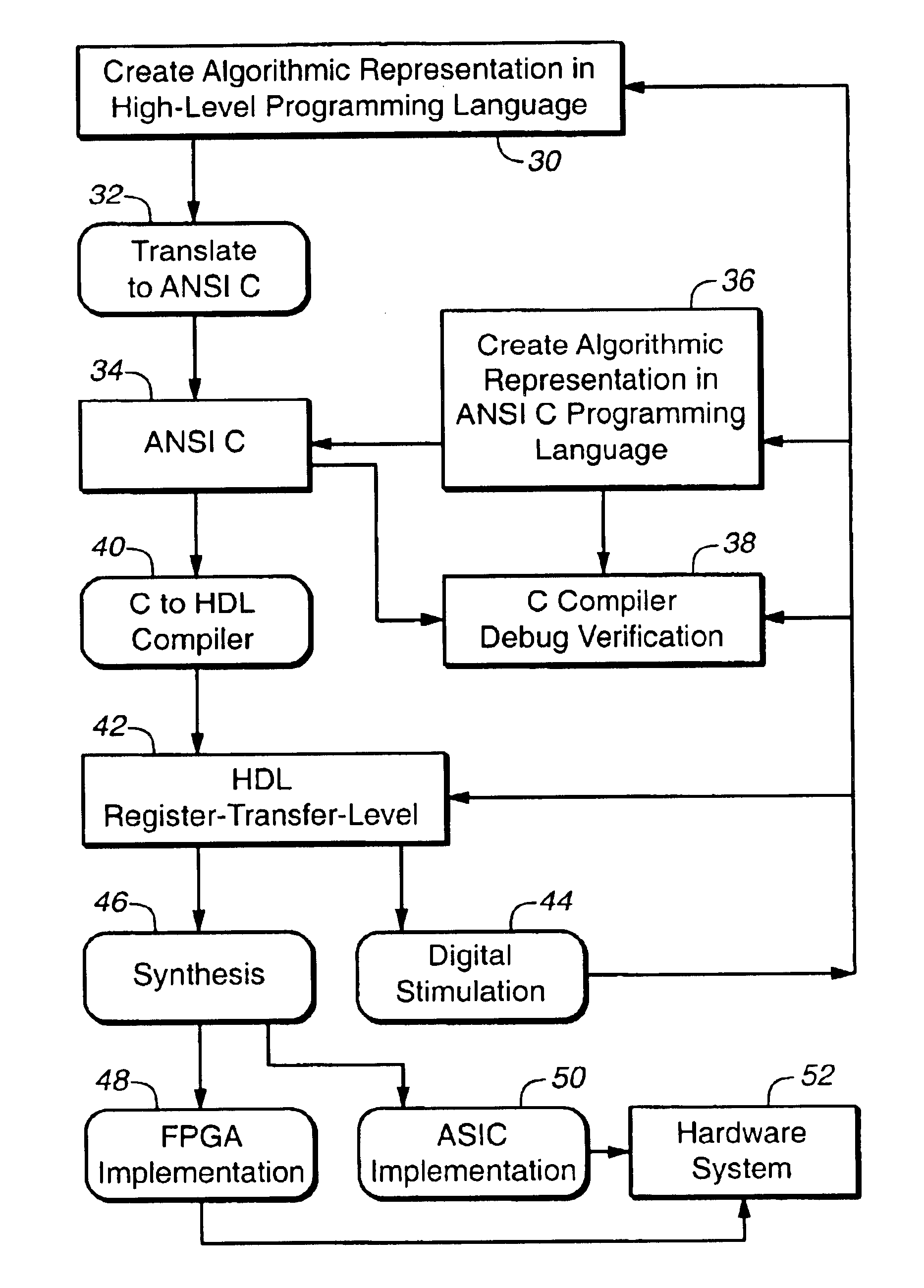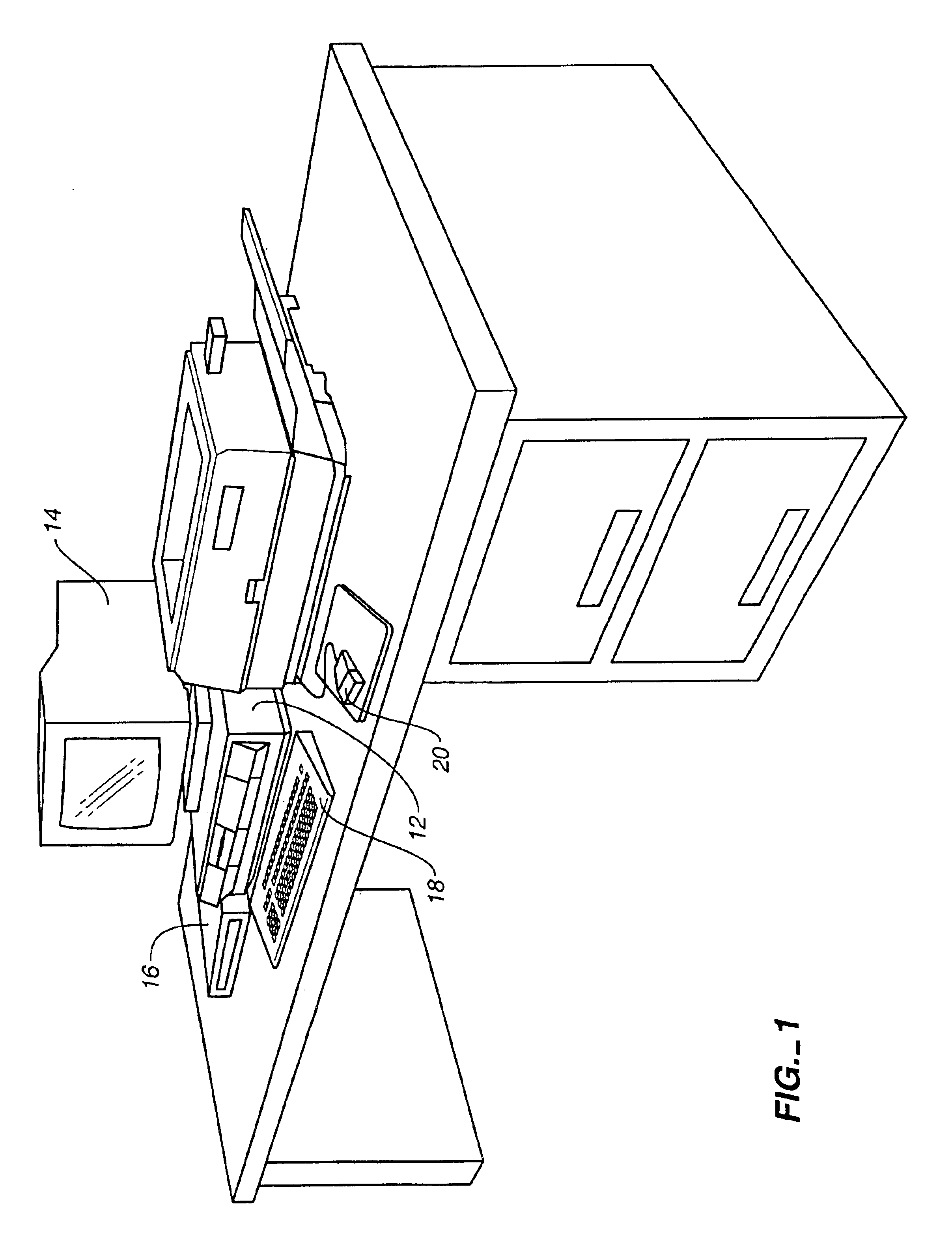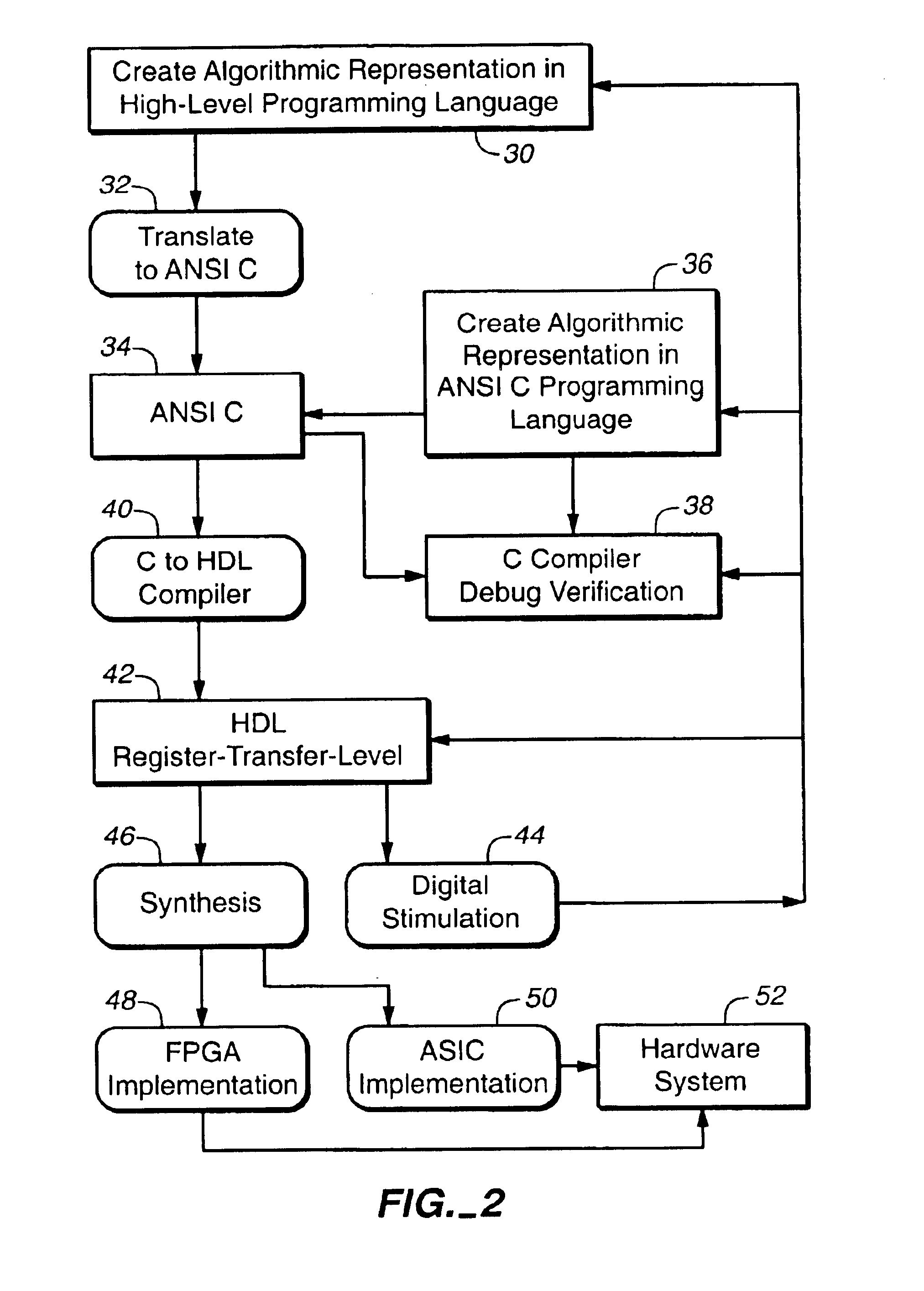System for converting hardware designs in high-level programming languages to hardware implementations
a hardware design and programming language technology, applied in the field of digital circuit configuration, to achieve the effect of efficient conversion
- Summary
- Abstract
- Description
- Claims
- Application Information
AI Technical Summary
Benefits of technology
Problems solved by technology
Method used
Image
Examples
Embodiment Construction
The computer aided hardware design tool in accordance with the various embodiments of the invention is executed on a computer 12, as shown in FIG. 1. The computer aided hardware design tool in accordance with one embodiment of the invention is preferably a 32-bit electronic computer aided design (ECAD) application compatible with a Microsoft Windows 95 or Microsoft NT 3.51 or later operating system available from Microsoft Corporation located in Redmond, Wash. The computer 12 comprises a minimum of 16 MB of random access memory (RAM) and preferably includes 32 MB of RAM. The computer 12 also comprises a hard disk drive having 40 MB of free storage space available.
In an alternative embodiment, the computer aided hardware design tool can be available by connecting to the web site of the supplier of the computer aided hardware design tool. The computer 12 is provided with an Internet connection, such as a modem, for connection to the web site of the supplier of the computer aided hardw...
PUM
 Login to View More
Login to View More Abstract
Description
Claims
Application Information
 Login to View More
Login to View More - R&D
- Intellectual Property
- Life Sciences
- Materials
- Tech Scout
- Unparalleled Data Quality
- Higher Quality Content
- 60% Fewer Hallucinations
Browse by: Latest US Patents, China's latest patents, Technical Efficacy Thesaurus, Application Domain, Technology Topic, Popular Technical Reports.
© 2025 PatSnap. All rights reserved.Legal|Privacy policy|Modern Slavery Act Transparency Statement|Sitemap|About US| Contact US: help@patsnap.com



